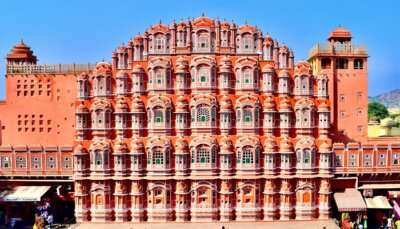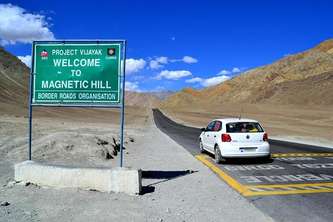Kabbaladurga Trek Is The Hidden Paradise Of Trekking To Visit In 2025

Kabbaladurga is a small hill in Karnataka. The Kabbaladurga trek is an offbeat trekking destination high up in the mountains, providing outstanding opportunities for adventure enthusiasts and nature lovers to explore unpolluted landscapes and test physical strength. In this detailed guide, we will look closely at different aspects of Kabbaladurga and deliver everything you would like to know about this trek. The serene view is that of a moderately troublesome hike, enticing forests, remnants of ancient ruins, and splendid views.
About The Kabbaladurga Trek
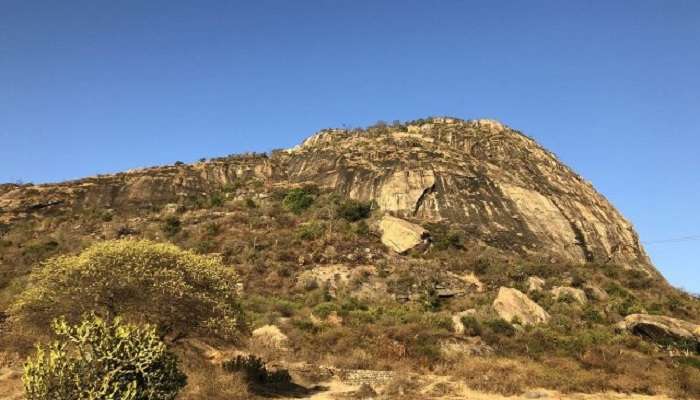
Kabbaladurga, a serene hill in the Channarayapatna taluk of Hassan district, offers a perfect weekend escape for those seeking fresh air away from the hustle and bustle of Bangalore. Located just 160 km from the city, this tranquil spot provides a refreshing retreat amidst nature. You can reach Kabbaladurga by taking a scenic drive via Hassan or by hopping on a bus to Hassan and hiring a local taxi to the trail’s starting point. Whether you’re looking to recharge or enjoy the outdoors, Kabbaladurga is an ideal destination for a peaceful getaway.
Trek Summary
The Kabbaladurga trek can be classified as moderately complex and passes through various kinds of land, from lush forests to rock outcrops in their natural formations. The trail terminates at the ruins of a frazzled ancient fort that crowns the hill, commanding panoramic views of the surroundings. This trek is about 3-4 km one way and approximately 2-3 hours to the summit, depending on your fitness levels and the several stops you take.
Best Season To Visit
The ideal months to go on the Kabbaladurga trek would be October and February. The weather is quite good, and one can easily participate in any sport of adventure. One can expect a clear sky with a not-so-cold temperature, making it easy to trek. One should strictly avoid the monsoon season from June to September since the tracks become slippery and dangerous.
Kabbaladurga is classified as a medium-level trek. It does not include any technical climbing but requires anybody who attempts it to be reasonably fit due to its steep sections and uneven paths. It is pretty easy initially but has a steep climb on forest trails to the top. The gradient gets higher at higher altitudes, and it becomes challenging to scramble through rocks.
Also Read: Places To Visit In Bangalore Within 100 Km
What To Expect Along The Trail

Thick Forests: The trek commences by walking in thick, rich, dense forests. The flora is of various deciduous kinds, while the fauna represents colourful birds and butterflies of all types.
Rocky Terrain: With every successive climb uphill, the terrain slowly changes to predominantly rockier lands. Giant boulders come up in one’s path, steep inclines that another adventurer would revel in.
Ancient Ruins: On the way to the top, these form remains of some structures of the centuries-old Kabbaladurga fort. The structures are a real treat for any place lover and make great pictures.
Scenic Views: As in all treks, the best part is visible on top. From its top, impressions of mile upon mile of rolling hills, green valleys, and even distant bodies of water are views in unmistakable visage.
How You Should Prepare Yourself for the Trek

Prepare yourself for the task ahead so that it is never a burden and is full of fun. Here are some suggestions for preparing for the trek:
Physical Fitness: One need not be an athlete, but some stamina built by regular cardio exercises and practice hikes will make this trek far more enjoyable.
Appropriate Gear: Use a decent pair of shoes with grips while trekking. Comfort your comfort level with pieceable comfort wear where you can breathe, and at least carry one jacket—one needs a lightweight one because it gets a little too windy at the peak.
Fluid Intake: Carry at least 2 litres of water per person. On treks, especially on sunny days, one may get dehydrated.
Refresher and Energy Booster: Energy bars, nuts, and dry fruits can be used to refresh and energise oneself while on the climb.
First Aid: One should always be able to carry a basic first-aid box containing bandages, antiseptic creams, and personal medication, if necessary.
Sun Protection: a hat, sunglasses, and sunscreen to protect your skin from the sun. Flora and Fauna
Related Post: Bangalore Snow City
Cultural Aspects
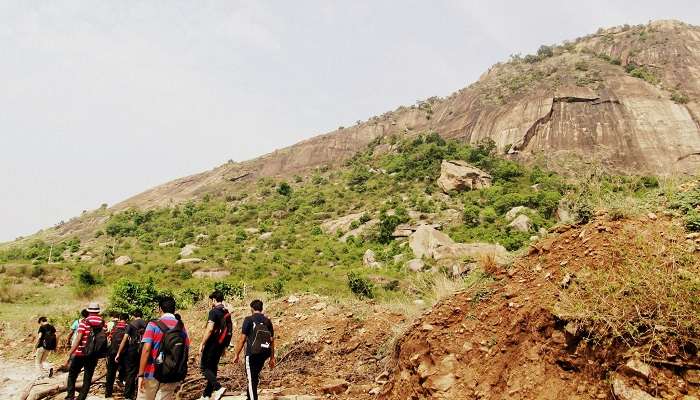
At the summit is a small temple—a cultural identification with Lord Shiva. Most trekkers who reach here offer prayers before descending. Most local devotees perform these pilgrimages at the start of the annual Shivaratri festival.
The neighbouring villages in its precincts can be recognized by their traditional artefact production of handloom cloth and pottery. If time permits, the villages can be visited to learn about the local customs and lifestyle.
Conservation and Responsible Trekking
As an eco-region, Kabbaladurga requires its trekkers to be responsible. Some of the do’s and don’ts of them are:
-
- Always walk only on marked paths to minimize damage to vegetation.
- Carry back all litter, especially biodegradable litter.
- Do not interfere with the flora and fauna or pluck flowers
- Be sensitive to local culture and ethics
- Employ only local guides and source food supplies locally to help the local economy.
Places To Explore Nearby
If you have more time off your schedule, then there are a few places around Kabbaladurga that you could consider visiting :
1. Shravana Belagola

Shravana Belagola, one of the most revered Jain pilgrimage centres, is approximately 50 km from Kabbaladurga. This sacred site, renowned for its majestic 57-foot statue of Lord Gommateshwara, attracts devotees and travellers alike, offering a profound sense of peace and spiritual reflection. The serene surroundings and rich history make Shravana Belagola a must-visit for those exploring the region. Whether you’re drawn by its religious significance or its tranquil beauty, visiting this historic site adds a meaningful and enriching experience to your journey near Kabbaladurga.
Distance From Kabbaladurga: 50 Km
Timings: 6:30 am –11:30 am and 3:30 pm – 6:30 pm
Related Post: Bangalore Travel Tips
2. Belur and Halebid

Belur and Halebid, twin towns steeped in history, are renowned for their stunning Hoysala temples, magnificent examples of ornate medieval Indian architecture. These temples, adorned with intricate carvings and detailed sculptures, transport visitors to a time of artistic brilliance and spiritual devotion. A visit to Belur and Halebid offers not just a glimpse into the architectural grandeur of the past, but also a deep connection to the cultural heritage of Karnataka. Exploring these temples is a journey through time, where every stone tells a story of the skilled artisans who crafted these masterpieces.
Distance From Kabbaladurga: 231 Km
Timings: NA
3. Hassan
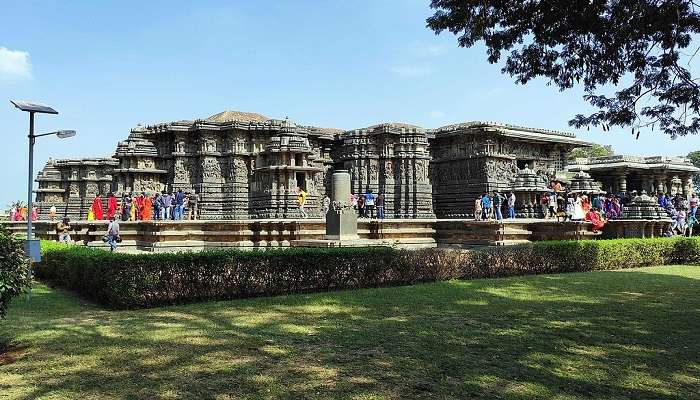
Hassan, the nearest sizable town to many of Karnataka’s historic sites, offers a unique glimpse into urban life in the region. With its bustling streets, vibrant markets, and warm hospitality, Hassan is a perfect base for exploring the surrounding attractions. The town has several comfortable guesthouses, providing travellers with a convenient and welcoming stay. Whether you want to experience local culture, savour traditional cuisine, or enjoy a relaxing stopover, Hassan offers a charming blend of modern amenities and authentic Karnataka life, making it an ideal gateway to the area’s rich heritage.
Distance From Kabbaladurga: 194 Km
Timings: NA
You May Also Like To Read: Weekend Getaways From Bangalore
Kabbaladurga Trek is a perfect concoction of adventure coupled with the elements of Nature and History. It would certainly not be easily forgotten, be it the seasoned trekker or the first-timer looking to take up the challenge of a day hike through this less-known attraction in the Western Ghats of Karnataka. Standing atop a historical fort with sweeping views, this experience sums up why Kabbaladurga quickly attracts interest among outdoor fanatics. Conquer the Kabbaladurga trek and trip to Karnataka, and go off the beaten path with this unique destination.
For our editorial codes of conduct and copyright disclaimer, please click here.
Cover Image Credit: Michal Klajban for Wikimedia Commons
Frequently Asked Questions About Kabbaladurga Trek
How good is the Kabbaladurga Trek?
The Kabbaladurga Trek is moderately difficult. There are no technical climbs, but good fitness is required. The initial part of the climb is easy, and as you move up to the peak, it will become steeper and tougher; in some parts, we might even have to scramble on the rocks.
When is the best time to do the Kabbaladurga Trek?
Kabbaladurga Trek is excellent from October to February. That is the time of the year when the weather is just fantastic: bright sunshine with clear skies amidst moderate temperatures. In this fashion, this is the right season for trekking. Avoid the monsoons—June to September—the trails are slippery and dangerous in patches.
What is the length of the trek, and how long would it take to reach the top?
This walk takes 3-4 km one way, and, on average, it generally takes 2-3 hrs to reach the top, depending upon your pace and the number of stoppages you take. Allocate a full day of 6-8 hours for a comfortable round trip—a reasonable amount of time spent exploring the ruins of the fort at the top and enjoying the views.
Do I need to have a guide for the Kabbaladurga Trek?
The hike should be planned with a guide. However, this is possible even without one. Since the trail may be challenging, especially for first-timers, hiking can be advised accordingly. It only feels natural to want to hire a local guide; an individual doing so might get some more information regarding the pathway, local History, flora, or fauna. They can be very resourceful toward your safety and also for a great trekking experience.
Can you name a few items that I should carry while going for the Kabbaladurga Trek?
Below are items that are highly recommended to be carried for the Kabbaladurga Trek:
- A good pair of trekking shoes, along with a pair of toe socks to avoid friction and prevent blisters
- At least 2 litres of water per head
- A wind-cheater since it can be quite windy at the top
- A good number of energy bars and dry fruits
- Wide hat for sun protection and sunshades with sunscreen
- Basic first aid kit
- Camera for photography purposes
People Also Read:
Bagini Glacier Trek Beas Kund Trek Overland Track Trek

With a passion for exploring and travelling to the roads long forgotten, experience the world through enthralling stories and adventures. Join me as I share my experiences at some of the world’s most popular tourist destinations and quench that pestering curiosity with something exciting!



